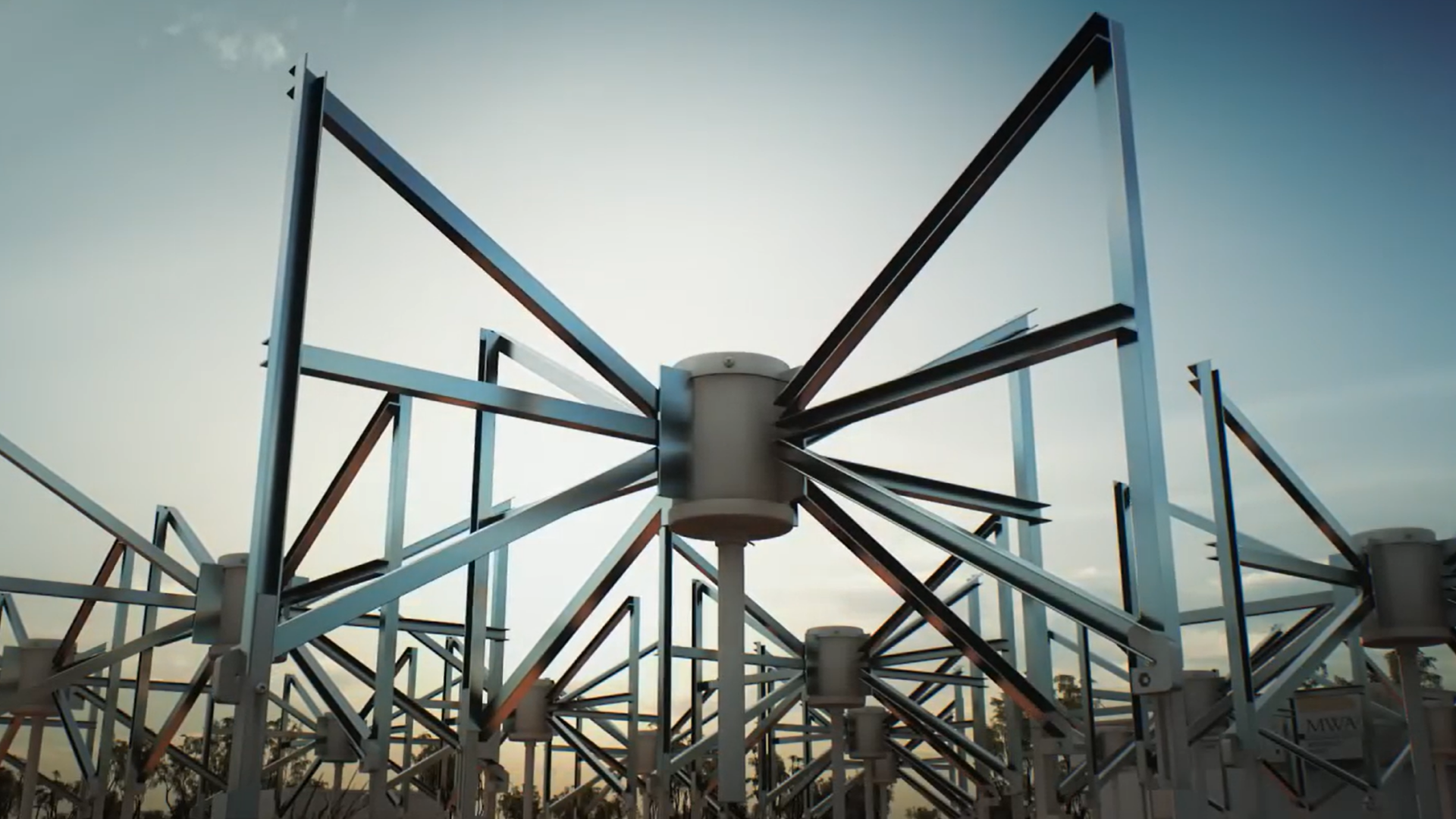Murchison Widefield Array
The Murchison Widefield Array (MWA) is a radio telescope, made of 4,096 spider-like antennas tuned to receive signals from the sky between 70 and 300MHz. Since its launch in 2013, the MWA has collected tens of petabytes of data which are sent over dedicated fibre and the National Broadband Network to the Pawsey Supercomputing Research Centre in Perth. From there, the data are accessed and analysed by hundreds of researchers from around the world using the All-Sky Virtual Observatory.

The Murchison Widefield Array (MWA) is an international project to create and operate a ground-breaking low-frequency radio telescope.
Led by Curtin Institute of Radio Astronomy, the MWA has been game-changer for Australian astrophysics and radio engineering. As an example of a collaboration between global research institutes, multi-national organisations, and Australian enterprises, the project has driven both fundamental and applied scientific research, and inspired a diversity of engineering and technical innovation.
The MWA is located at Inyarrimanha Ilgari Bundara, the CSIRO Murchison Radio-astronomy Observatory. The observatory is 300 kilometres inland from the coastal town of Geraldton, Western Australia, on Wajarri country. The MWA’s unprecedented capabilities underpin its critical role as the first fully operational precursor instrument of the A$1 billion Square Kilometre Array (SKA) project. Under construction on the same site, the SKA will be the world’s largest radio telescope, designed to solve the deepest mysteries of the Universe.
Since mid-2013, when the MWA began scanning the Earth’s southern skies, the project has supported a trove of scientific achievements. These include the breakthrough discovery of new ionospheric structures in the Earth’s atmosphere, involvement in the world’s first detection of gravitational waves and radiation from a neutron star merger, and the creation of a catalogue of 300,000 galaxies and the first radio-colour panorama of the universe in the GLEAM all-sky survey.
The telescope is maintained and remotely operated by a small team based at CIRA.
The MWA’s particular attributes include:
- a very wide field of view (hundreds of square degrees)
- high angular resolution (several arcminutes)
- wide frequency range (70–300 MHz) with flexible tuning
- extreme (digital) pointing agility
The MWA’s unprecedented capabilities also underpin its critical role as the ‘low-frequency precursor’ instrument of the A$1 billion Square Kilometre Array (SKA) Project. Currently in development, the SKA will be the world’s largest radio telescope, designed to solve the deepest mysteries of the Universe.